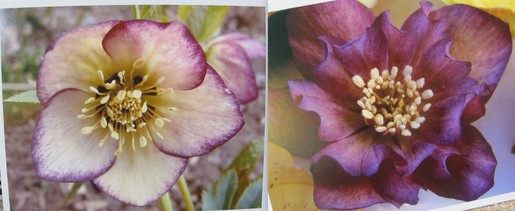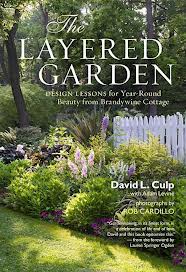Appreciating Hellebores, with David Culp

Just as we’re all going gaga over the (finally!) emerging spring bulbs, let’s pause to appreciate some flowers we’ve been enjoying for the last couple of months, those of the Hellebore family. Hellebore breeder (and author) David Culp visited Behnkes during our recent Spring Open House and used these and more fabulous photos of his own Brandywine Hybrids to make the point that Hellebores more than earn their place in our hearts and gardens.
The Virtues of Hellebores
- They’re long-lived.
- They’re evergreen.
- They seed around “with great abandon,” their seedlings eventually filling in a whole bed, even under the most difficult trees.
- They’re easy. “Put ’em in the ground and forget about them.”
- Plant them in full shade, full sun, or anything in between. Though if they’re not blooming, they might not be getting enough light – or you’ve planted them too deep. David calls them “the ultimate shade plant.” (DO avoid planting them in wet, boggy conditions, though. They hate that.)
- They’re critter-resistant. Even deer don’t like them.
- David brings them indoors as cut flowers, floating them in large bowls, where they look great for 10 days or so.
- They bloom even through the snow!
About those “Blooms”
David explained that the Hellebore’s so-called flowers we’re enjoying in winter are really not flowers at all – they’re sepals, colorful parts that attract pollinators. In fact, they’re getting more and more colorful these days, with breeders choosing sepals that are in colors like pink and purple, and less green.
About their Nodding Nature
Breeders are always working on developing Hellebores whose flowers face UP, so we can see them without bending down, but David has a different take on that. They’re just “hiding their sexual parts from the cold. They’re smart.” David actually likes that slight nod. You have to bend over and turn it up to see the inside, so the Hellebore is a participatory plant (love that term!) You can avoid having to bend down to see the insides of their flowers by planting them on a hillside, or in a raised bed.
Care
Just cut off their old leaves in January, a bit of housekeeping that isn’t required but lets the emerging flowers shine on their own. They don’t need dividing, though they can be divided if you wish. Just dig them up, wash the soil off, and separate into chunks that have both dark and white root, and at least two leaves. Late summer or spring are the times to divide them.
Native-Plant Wannabees
That’s what David calls them, because they’re so well adapted. They’re originally from Central Europe, mostly the Balkans, at higher elevations.
Brandywine Hybrids
They’re all from his very own garden, which is revealed in beautiful photos and inspiring text in his recent book The Layered Garden.
Posted by Susan Harris.


The Friends of the National Arboretum (FONA) posted a picture allong with the following message yesterday:
Hellebores blooming in the Chinese Pavilion of the Bonsai Museum. Commonly called Lenten roses, these lovely plants have been providing beautiful blooms since January!